A couple of questions worth asking… “What are my company’s values? What is our culture, and does a shifting corporate landscape necessitate a complete change in how we do business?”
An Unprecedented Shift
Surviving 2020 – for large corporations, small to mid-size businesses and start-ups, and even households required a wholesale commitment to change. With an unprecedentedly steep and unforgiving learning curve, everyone – from the doctor’s office to your child’s school to the world’s airports – entire institutions had to recalibrate.
Previously successful practices, strategies, and behaviors no longer guaranteed good fortune, and merely existing within this daunting new framework required a swift and decisive change in priorities, attitudes, and approaches.
Leadership and Change
Leaders, middle-managers, and individual contributors alike scrambled to acclimatize to a rapidly changing corporate landscape, where the status quo no longer worked and the institutionalization of new and different methodologies and infrastructures proved, in many instances, to be the difference between success and struggle. In general, we had to change virtually everything about the way we did business.
We learned what techniques we needed to succeed, and we modified our behaviors to achieve the results we needed. Time will tell if the working environment will ever return to the ‘pre-pandemic normal,’ and every redesign made to your business structure won’t necessarily be the result of anything as dramatic, but the need to be able to prepare your enterprise for and support your employees through the cultural adaptations and behavioral adjustments necessary to implement organizational change remains resolute and unaffected.
Organizations and Change
Organizational change can be a change in purpose, how that purpose is accomplished, a change in culture, norms, and/or values, or some combination of all three of these elements. Once a need for change is established (either as a result of a necessary pivot due to Force Majeure or through a comprehensive evaluation of existing business practices), leaders should converge to deliberate on the new direction they wish to take. Because a company’s success is defined by outcomes, and outcomes are a direct result of action (or inaction,) it’s useful to look at the change in terms of behaviors.
Leaders should discuss the changes they wish to see, verbalize the new vision in a behavior-oriented way, and then develop an effective communication strategy for information dissemination among workers. The process of stewarding an entire business through a foundation-altering transformation requires ALL employees, from leadership to front-line individual contributors, to change their actions and learn and exhibit the new behaviors necessary to ensure alignment with the company’s new direction.
You may never know if you’ve truly won your employees’ hearts and minds, but the quality of their output will indicate whether or not true learning occurred and change has been effectively implemented throughout your organization.
Change from a Behavioral Perspective
Thinking about change from a behavioral/learning perspective helps you:
- Pick the right initiatives at the right time.
- Measure the change (behaviors are observable and measurable)
- Develop tools to help others help themselves and their teams.
- Keep the change manageable.
When measuring change, “energy flows where focus goes.”
That sentence is a succinct way to remember that what gets measured drives behavior. Employees want to do well, and in your company’s new vision, there should exist a recognition and incentivization program that exists to propel the behaviors you wish to see. It is CRITICAL that this program have solid alignment, from top to bottom, to ensure that you are not actively pushing for (or rewarding) one outcome while inadvertently encouraging the behavior that results in another.
The Need for a Metric Audit
Any misalignment might not be readily recognizable and certainly wouldn’t be intentional, so performing a metric audit of the measures your organization uses to define success could help determine what, if any, unintended consequences and undesirable behaviors these metrics might be driving. A metric audit is useful whether or not you are going through a planned change. You click here to download a free guide to conducting one.
Metrics should also be present in leadership performance plans so that individuals who are responsible for driving the behaviors you wish to see are held accountable.
Bringing it Together
Ask yourself this… “What would I want a journalist to say about my organization in five years?” Reframing change in terms of behavior, when done upfront and with organizational buy-in, makes the process more tangible, successful, and easy to manage. When done on the back end, the measurements you put in place drive and reinforce the correct behaviors so that the change you want becomes institutionalized within your organization.





